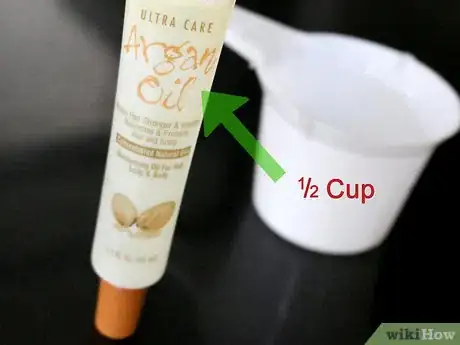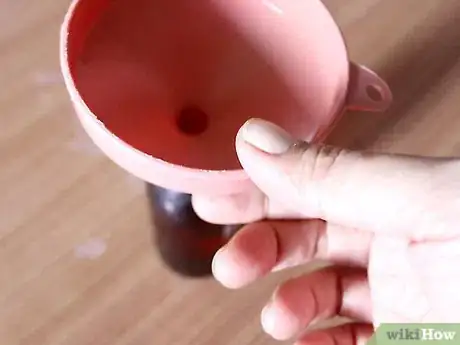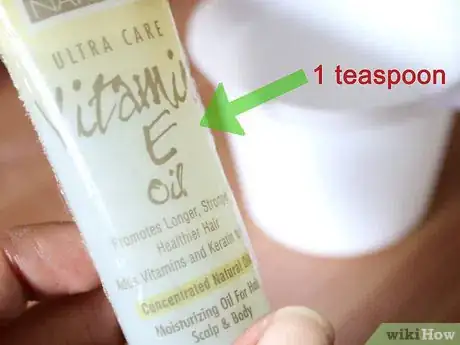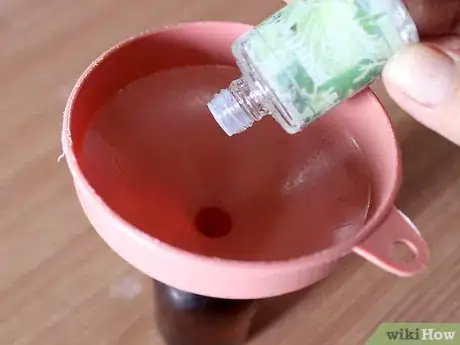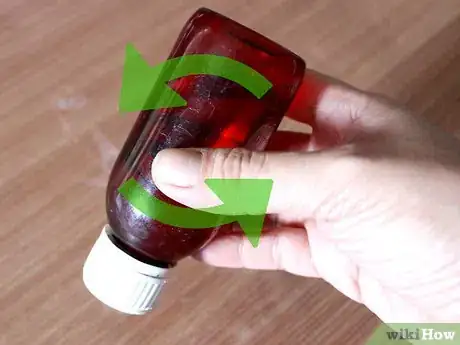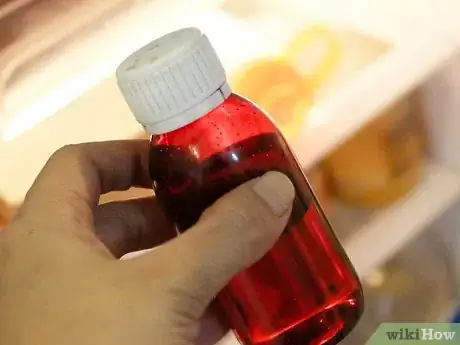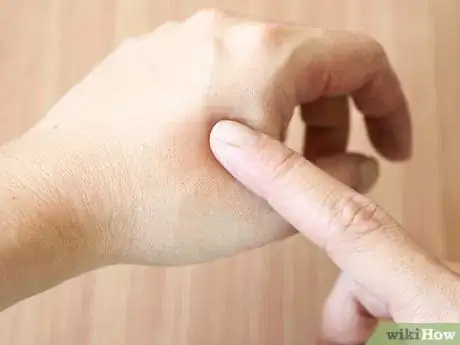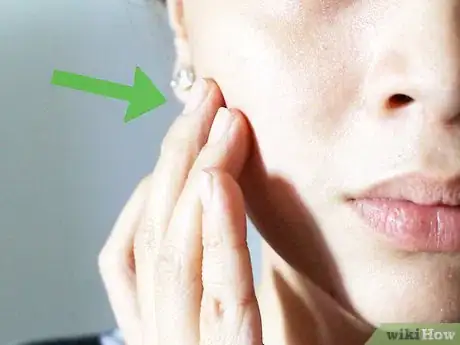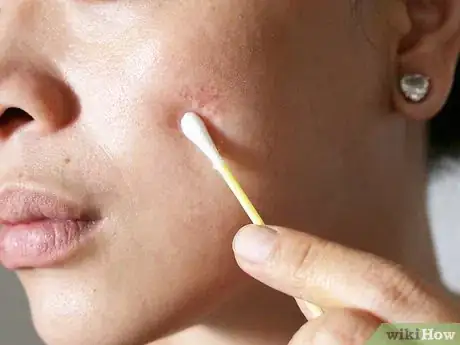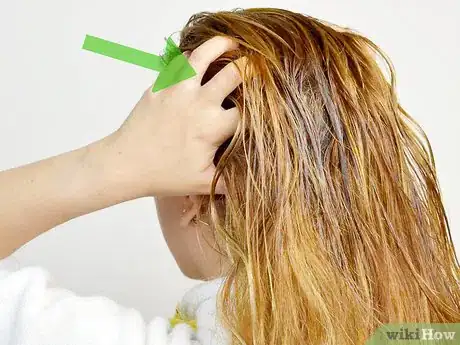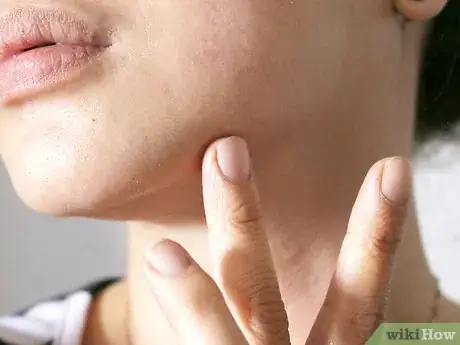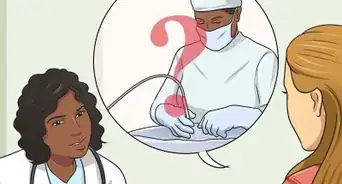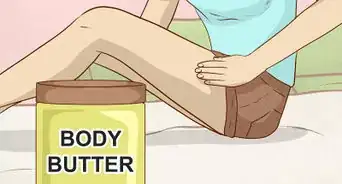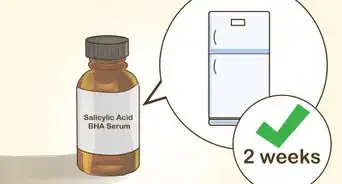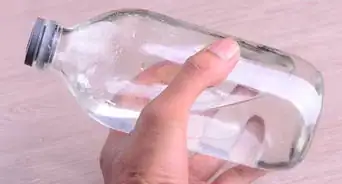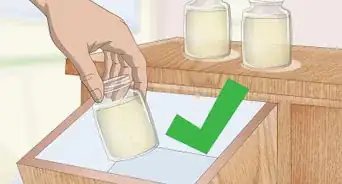X
This article was co-authored by wikiHow Staff. Our trained team of editors and researchers validate articles for accuracy and comprehensiveness. wikiHow's Content Management Team carefully monitors the work from our editorial staff to ensure that each article is backed by trusted research and meets our high quality standards.
This article has been viewed 61,791 times.
Learn more...
Steps
Method 1
Method 1 of 2:
Making Vitamin E Oil
-
1Measure out four ounces (1/2 cup) of your chosen base oil. Use your measuring cup to measure out your oil. Since you will be using this oil on your skin and hair, you will need to make sure that the oil you choose is organic and non-comedogenic. Non-comedogenic oils will not clog your pores and are less likely to cause breakouts. Some good choices include:
- argan oil
- hemp seed oil
- sunflower oil
- safflower oil
-
2Use a funnel to transfer the oil into a dark brown or cobalt blue bottle. The funnel will help to make sure that you do not spill the oil. Insert the funnel into the bottle and then pour in the four ounces of oil that you have measured out. The dark brown or blue bottle will protect the vitamin E oil from getting degraded and oxidized by light.Advertisement
-
3Cut the tops off of four caplets of vitamin E (400 IU each). Leave the funnel in place and pour the contents of the Vitamin E caplets and into the bottle containing the base oil. Or, if you prefer, you can use a needle to make a hole in the caplet and then squeeze the Vitamin E into the bottle.
- If you have vitamin E oil in liquid form instead of in caplets, then measure out about one teaspoon and add it to the base oil.[3]
-
4Add a few drops of essential oil if desired. To add a scent, add 3-5 drops of an essential oil of your choice. Pour the drops into the bottle containing the base oil and vitamin E oil. Some great essential oils to use include:[4]
- rose
- lilac
- lavender
- orange
- lemon
- peppermint
-
5Mix the oils together. Secure the cap on the bottle and turn the bottle upside down. Then turn it right-side up and then upside down again. Repeat this inversion several times to make sure that the oils are all mixed together.
Advertisement
Method 2
Method 2 of 2:
Storing and Using the Oil
-
1Store in the refrigerator. Your vitamin E oil will last longer if you keep it in the refrigerator because it will be protected from light and kept cool.[5] Make sure that the cap is on tight before you place the oil in the fridge.
- Warm the bottle in your hands before use. Before using the oil, take a minute to warm up the bottle in your hands. You may also want to mix it by turning it upside down and right-side up a few times.
-
2Test your oil on a small area of skin before you use it for the first time. Some people may have a reaction to the oil, so it is a good idea to test some on a small area of your skin before you use it on a larger area.
- To test the oil, apply 1-2 drops to the inside of your wrist and then massage it in. Wait 24 hours and then check your wrist to see how it looks. If there is any redness, dryness, itching or swelling, do not use the oil. If the area looks and feels normal, then you can use the oil.
-
3Use a small amount. This oil goes a long way, so you should not need much to moisturize your face, hair, or other areas of your body. Start with a dime sized amount in the palm of your hand and then add more if needed.
- Keep in mind that even though the vitamin E oil is non-comedogenic oil, it may clog your pores if you use too much.
- Stop using the oil if it causes breakouts. Some people may experience breakouts even though the oil is non-comedogenic.
-
4Wash your face before applying vitamin E oil. Before you apply vitamin E oil to your face, make sure that you wash your face and remove any makeup that you were wearing. The vitamin E oil will be more effective and less likely to clog your pores if you apply it to clean skin.
-
5Use a Q-tip or cotton ball to apply oil to a scar. Vitamin E oil may help to reduce the appearance of old scars.[6] [7] If you are trying to reduce the size or the look of a scar, use a Q-tip or a cotton ball to apply the oil directly onto the scar. Consult your physician or dermatologist to determine how often you should treat.
- Do not apply vitamin E oil to broken skin or a fresh wound.
-
6Massage oil into your scalp using your fingertips. You can use vitamin E oil on your hair to add a lustrous shine or massage it into your scalp. If you are using the Vitamin E oil on your scalp, work it into the entire scalp, addressing the roots of your hair. Pour a small amount of oil into the palm of your hand, dip your fingers in the oil, and then work it into your scalp.
-
7Finished.
Advertisement
Community Q&A
-
QuestionHow do I get vitamin E oil from vitamin E capsules?
 Community AnswerJust poke the capsule with a pin to get the oil out. Make sure to collect it in a container.
Community AnswerJust poke the capsule with a pin to get the oil out. Make sure to collect it in a container. -
QuestionHow many drops of vitamin E oil will fill a capsule?
 Community Answer4 - 6 drops.
Community Answer4 - 6 drops. -
QuestionWhat are good uses for vitamin E oil?
 Spencer YuCommunity AnswerVitamin E oil can be used as a moisturizer on the body, face, or in your hair. After cleansing, apply a small amount of vitamin E oil on damp hair or skin wherever you want the extra moisturizing. If you wish, you may follow with a second moisturizer, serum, or leave-in hair conditioner.
Spencer YuCommunity AnswerVitamin E oil can be used as a moisturizer on the body, face, or in your hair. After cleansing, apply a small amount of vitamin E oil on damp hair or skin wherever you want the extra moisturizing. If you wish, you may follow with a second moisturizer, serum, or leave-in hair conditioner.
Advertisement
Warnings
- Try not to get the oil on clothing or bedding. Most of these oils can stain clothing and bedding, so be careful not to get any on your clothes or other fabric. Make sure that you wipe off any excess oil that is left on your hands or face as well.⧼thumbs_response⧽
Advertisement
Things You’ll Need
- organic, non-comedogenic base oil such as argan oil, hemp seed oil, safflower oil, or sunflower oil
- Vitamin E capsules
- essential oil of your choice (optional)
- a dark brown or cobalt glass bottle
- measuring cup
- a small funnel
References
- ↑ http://www.ncbi.nlm.nih.gov/pubmed/10594744
- ↑ http://lpi.oregonstate.edu/mic/micronutrients-health/skin-health/nutrient-index/vitamin-E
- ↑ https://wellnessmama.com/beauty/homemade-lotion-recipe/
- ↑ https://wellnessmama.com/beauty/homemade-lotion-recipe/
- ↑ http://www.aromaweb.com/articles/storing.asp
- ↑ http://www.ncbi.nlm.nih.gov/pubmed/10594744
- ↑ http://lpi.oregonstate.edu/mic/micronutrients-health/skin-health/nutrient-index/vitamin-E
About This Article
Advertisement
